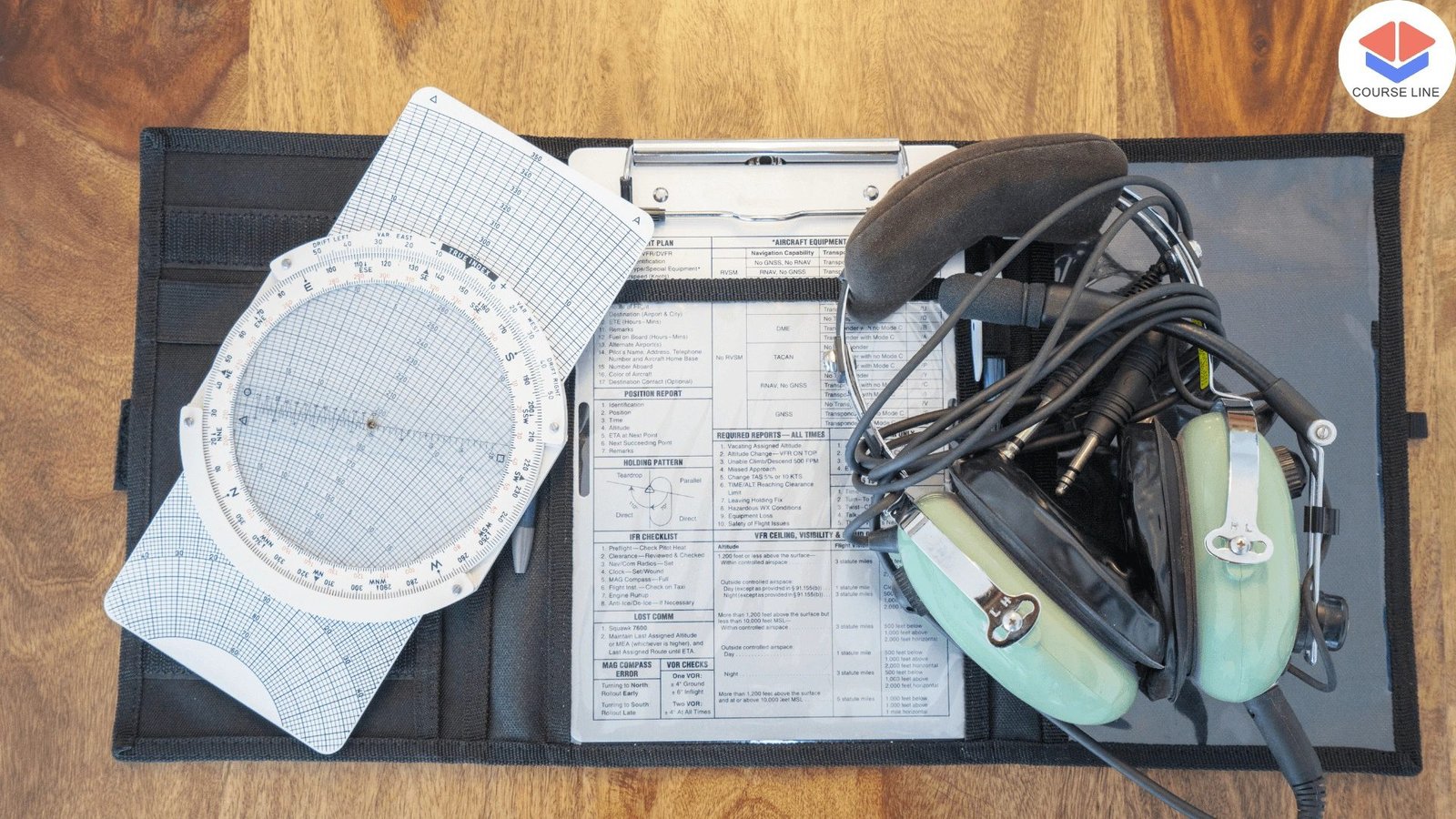Course Features
Price
Study Method
Online | Self-paced
Course Format
Reading Material - PDF, article
Duration
4 hours, 35 minutes
Qualification
No formal qualification
Certificate
At completion
Additional info
Coming soon
- Share
Overview
A safe and healthy workplace is essential for employee well-being, regulatory compliance, and business efficiency. The Workplace Health and Safety Level 3 Advanced Diploma is designed to provide a thorough understanding of occupational health and safety (OHS) principles, helping professionals identify hazards, mitigate risks, and create a culture of safety within their organizations.
The course begins with an Introduction to Workplace Health and Safety, covering workplace hazards, the interaction between work and health, occupational hygiene, ergonomics, and safety standards in various industries. Learners will explore the evolution of workplace safety and the key global regulatory bodies such as OSHA and HSE.
The module on Employee Health and Safety delves into safety program development, industrial health initiatives, and critical safety elements necessary for a secure workplace. This section provides step-by-step guidance on implementing and maintaining effective health and safety programs.
Understanding Safety and Health Inspections is essential for evaluating workplace safety performance. This module covers safety education, employee safety awareness programs, appraisal of employee attitudes toward safety, and developing a complaint reporting system.
Incident reporting plays a key role in workplace safety. The Incident Reporting module teaches learners how to document workplace incidents, maintain log books, and implement efficient reporting systems to prevent future hazards.
The course also covers Health and Safety Investigations, providing a structured approach to gathering data, analyzing risks, implementing control measures, and developing action plans to improve workplace safety.
A strong focus is placed on Building a Safety Culture, including engaging co-workers in health and safety, implementing safety committees, conducting toolbox talks, and promoting responsibility through job safety analysis. This section also introduces corporate social responsibility (CSR) and sustainability in workplace safety.
The module on Hazard Identification equips learners with the skills to inspect workplaces, identify health risks, assess hazards, and implement interim control measures.
Students will also explore Environmental Factors and Occupational Safety, including organizational accidents, safety management practices, and workplace safety climates.
In Psychological Factors and Occupational Safety, learners study human error, accident proneness, and safety violations while exploring how human behavior influences workplace safety.
The Planning for Health and Safety module focuses on developing safety policies, allocating resources for safety programs, controlling contractor safety compliance, emergency planning, and conducting safety audits.
Learners will gain practical skills in First Aid at Work, including first aid requirements, maintaining first aid kits, handling emergencies, and ensuring proper disposal of biohazard materials.
Fire Safety at Work is a crucial component, where students will develop fire safety plans, implement prevention strategies, and create workplace evacuation procedures.
The course also provides in-depth training on Working at Heights, Safety Signs and Signals, Workplace Transport Safety, and Manual Handling—all essential for high-risk industries.
Specialized modules on Managing Electrical and Gas Safety provide the necessary knowledge for handling hazardous energy sources, ensuring compliance, and preventing accidents related to electricity and gas leaks.
The diploma concludes with The Working Environment, covering waste disposal, noise control, environmental regulations, and welfare provisions for employees.
By the end of this diploma, learners will have gained comprehensive expertise in occupational health and safety, risk management, emergency planning, and compliance, making them valuable assets in corporate, industrial, and public sector workplaces.
Who is this course for?
A safe and healthy workplace is essential for employee well-being, regulatory compliance, and business efficiency. The Workplace Health and Safety Level 3 Advanced Diploma is designed to provide a thorough understanding of occupational health and safety (OHS) principles, helping professionals identify hazards, mitigate risks, and create a culture of safety within their organizations.
The course begins with an Introduction to Workplace Health and Safety, covering workplace hazards, the interaction between work and health, occupational hygiene, ergonomics, and safety standards in various industries. Learners will explore the evolution of workplace safety and the key global regulatory bodies such as OSHA and HSE.
The module on Employee Health and Safety delves into safety program development, industrial health initiatives, and critical safety elements necessary for a secure workplace. This section provides step-by-step guidance on implementing and maintaining effective health and safety programs.
Understanding Safety and Health Inspections is essential for evaluating workplace safety performance. This module covers safety education, employee safety awareness programs, appraisal of employee attitudes toward safety, and developing a complaint reporting system.
Incident reporting plays a key role in workplace safety. The Incident Reporting module teaches learners how to document workplace incidents, maintain log books, and implement efficient reporting systems to prevent future hazards.
The course also covers Health and Safety Investigations, providing a structured approach to gathering data, analyzing risks, implementing control measures, and developing action plans to improve workplace safety.
A strong focus is placed on Building a Safety Culture, including engaging co-workers in health and safety, implementing safety committees, conducting toolbox talks, and promoting responsibility through job safety analysis. This section also introduces corporate social responsibility (CSR) and sustainability in workplace safety.
The module on Hazard Identification equips learners with the skills to inspect workplaces, identify health risks, assess hazards, and implement interim control measures.
Students will also explore Environmental Factors and Occupational Safety, including organizational accidents, safety management practices, and workplace safety climates.
In Psychological Factors and Occupational Safety, learners study human error, accident proneness, and safety violations while exploring how human behavior influences workplace safety.
The Planning for Health and Safety module focuses on developing safety policies, allocating resources for safety programs, controlling contractor safety compliance, emergency planning, and conducting safety audits.
Learners will gain practical skills in First Aid at Work, including first aid requirements, maintaining first aid kits, handling emergencies, and ensuring proper disposal of biohazard materials.
Fire Safety at Work is a crucial component, where students will develop fire safety plans, implement prevention strategies, and create workplace evacuation procedures.
The course also provides in-depth training on Working at Heights, Safety Signs and Signals, Workplace Transport Safety, and Manual Handling—all essential for high-risk industries.
Specialized modules on Managing Electrical and Gas Safety provide the necessary knowledge for handling hazardous energy sources, ensuring compliance, and preventing accidents related to electricity and gas leaks.
The diploma concludes with The Working Environment, covering waste disposal, noise control, environmental regulations, and welfare provisions for employees.
By the end of this diploma, learners will have gained comprehensive expertise in occupational health and safety, risk management, emergency planning, and compliance, making them valuable assets in corporate, industrial, and public sector workplaces.
Requirements
A safe and healthy workplace is essential for employee well-being, regulatory compliance, and business efficiency. The Workplace Health and Safety Level 3 Advanced Diploma is designed to provide a thorough understanding of occupational health and safety (OHS) principles, helping professionals identify hazards, mitigate risks, and create a culture of safety within their organizations.
The course begins with an Introduction to Workplace Health and Safety, covering workplace hazards, the interaction between work and health, occupational hygiene, ergonomics, and safety standards in various industries. Learners will explore the evolution of workplace safety and the key global regulatory bodies such as OSHA and HSE.
The module on Employee Health and Safety delves into safety program development, industrial health initiatives, and critical safety elements necessary for a secure workplace. This section provides step-by-step guidance on implementing and maintaining effective health and safety programs.
Understanding Safety and Health Inspections is essential for evaluating workplace safety performance. This module covers safety education, employee safety awareness programs, appraisal of employee attitudes toward safety, and developing a complaint reporting system.
Incident reporting plays a key role in workplace safety. The Incident Reporting module teaches learners how to document workplace incidents, maintain log books, and implement efficient reporting systems to prevent future hazards.
The course also covers Health and Safety Investigations, providing a structured approach to gathering data, analyzing risks, implementing control measures, and developing action plans to improve workplace safety.
A strong focus is placed on Building a Safety Culture, including engaging co-workers in health and safety, implementing safety committees, conducting toolbox talks, and promoting responsibility through job safety analysis. This section also introduces corporate social responsibility (CSR) and sustainability in workplace safety.
The module on Hazard Identification equips learners with the skills to inspect workplaces, identify health risks, assess hazards, and implement interim control measures.
Students will also explore Environmental Factors and Occupational Safety, including organizational accidents, safety management practices, and workplace safety climates.
In Psychological Factors and Occupational Safety, learners study human error, accident proneness, and safety violations while exploring how human behavior influences workplace safety.
The Planning for Health and Safety module focuses on developing safety policies, allocating resources for safety programs, controlling contractor safety compliance, emergency planning, and conducting safety audits.
Learners will gain practical skills in First Aid at Work, including first aid requirements, maintaining first aid kits, handling emergencies, and ensuring proper disposal of biohazard materials.
Fire Safety at Work is a crucial component, where students will develop fire safety plans, implement prevention strategies, and create workplace evacuation procedures.
The course also provides in-depth training on Working at Heights, Safety Signs and Signals, Workplace Transport Safety, and Manual Handling—all essential for high-risk industries.
Specialized modules on Managing Electrical and Gas Safety provide the necessary knowledge for handling hazardous energy sources, ensuring compliance, and preventing accidents related to electricity and gas leaks.
The diploma concludes with The Working Environment, covering waste disposal, noise control, environmental regulations, and welfare provisions for employees.
By the end of this diploma, learners will have gained comprehensive expertise in occupational health and safety, risk management, emergency planning, and compliance, making them valuable assets in corporate, industrial, and public sector workplaces.
Career path
A safe and healthy workplace is essential for employee well-being, regulatory compliance, and business efficiency. The Workplace Health and Safety Level 3 Advanced Diploma is designed to provide a thorough understanding of occupational health and safety (OHS) principles, helping professionals identify hazards, mitigate risks, and create a culture of safety within their organizations.
The course begins with an Introduction to Workplace Health and Safety, covering workplace hazards, the interaction between work and health, occupational hygiene, ergonomics, and safety standards in various industries. Learners will explore the evolution of workplace safety and the key global regulatory bodies such as OSHA and HSE.
The module on Employee Health and Safety delves into safety program development, industrial health initiatives, and critical safety elements necessary for a secure workplace. This section provides step-by-step guidance on implementing and maintaining effective health and safety programs.
Understanding Safety and Health Inspections is essential for evaluating workplace safety performance. This module covers safety education, employee safety awareness programs, appraisal of employee attitudes toward safety, and developing a complaint reporting system.
Incident reporting plays a key role in workplace safety. The Incident Reporting module teaches learners how to document workplace incidents, maintain log books, and implement efficient reporting systems to prevent future hazards.
The course also covers Health and Safety Investigations, providing a structured approach to gathering data, analyzing risks, implementing control measures, and developing action plans to improve workplace safety.
A strong focus is placed on Building a Safety Culture, including engaging co-workers in health and safety, implementing safety committees, conducting toolbox talks, and promoting responsibility through job safety analysis. This section also introduces corporate social responsibility (CSR) and sustainability in workplace safety.
The module on Hazard Identification equips learners with the skills to inspect workplaces, identify health risks, assess hazards, and implement interim control measures.
Students will also explore Environmental Factors and Occupational Safety, including organizational accidents, safety management practices, and workplace safety climates.
In Psychological Factors and Occupational Safety, learners study human error, accident proneness, and safety violations while exploring how human behavior influences workplace safety.
The Planning for Health and Safety module focuses on developing safety policies, allocating resources for safety programs, controlling contractor safety compliance, emergency planning, and conducting safety audits.
Learners will gain practical skills in First Aid at Work, including first aid requirements, maintaining first aid kits, handling emergencies, and ensuring proper disposal of biohazard materials.
Fire Safety at Work is a crucial component, where students will develop fire safety plans, implement prevention strategies, and create workplace evacuation procedures.
The course also provides in-depth training on Working at Heights, Safety Signs and Signals, Workplace Transport Safety, and Manual Handling—all essential for high-risk industries.
Specialized modules on Managing Electrical and Gas Safety provide the necessary knowledge for handling hazardous energy sources, ensuring compliance, and preventing accidents related to electricity and gas leaks.
The diploma concludes with The Working Environment, covering waste disposal, noise control, environmental regulations, and welfare provisions for employees.
By the end of this diploma, learners will have gained comprehensive expertise in occupational health and safety, risk management, emergency planning, and compliance, making them valuable assets in corporate, industrial, and public sector workplaces.
-
- Workplace Health and Safety 00:10:00
-
- Employee Health and Safety 00:10:00
-
- Safety and Health Inspections 00:10:00
-
- Incident Reporting 00:10:00
-
- Health and safety investigations 00:10:00
-
- The Safety Culture 00:10:00
-
- Identifying Hazards 00:10:00
-
- Environmental factors and occupational safety 00:10:00
-
- Perceptions of management commitment to safety 00:10:00
-
- Psychological factors and occupational safety 00:10:00
-
- Planning for Health and Safety 00:10:00
-
- First aid at work 00:10:00
-
- Fire Safety at Work 00:10:00
-
- Working at Height 00:10:00
-
- Safety Signs and Signals 00:10:00
-
- Managing Workplace Transport Safety 00:10:00
-
- Manual Handling at Work 00:10:00
-
- Managing Electrical Safety 00:10:00
-
- Managing Gas Safety 00:10:00
-
- The Working Environment 00:10:00
-
- Safety in Offices, Workshops and in Catering Operations 00:10:00
-
- Exam of Workplace Health and Safety Level 3 00:50:00
-
- Premium Certificate 00:15:00

No Reviews found for this course.
Is this certificate recognized?
Yes, our premium certificate and transcript are widely recognized and accepted by embassies worldwide, particularly by the UK embassy. This adds credibility to your qualification and enhances its value for professional and academic purposes.
I am a beginner. Is this course suitable for me?
Yes, this course is designed for learners of all levels, including beginners. The content is structured to provide step-by-step guidance, ensuring that even those with no prior experience can follow along and gain valuable knowledge.
I am a professional. Is this course suitable for me?
Yes, professionals will also benefit from this course. It covers advanced concepts, practical applications, and industry insights that can help enhance existing skills and knowledge. Whether you are looking to refine your expertise or expand your qualifications, this course provides valuable learning.
Does this course have an expiry date?
No, you have lifetime access to the course. Once enrolled, you can revisit the materials at any time as long as the course remains available. Additionally, we regularly update our content to ensure it stays relevant and up to date.
How do I claim my free certificate?
I trust you’re in good health. Your free certificate can be located in the Achievement section. The option to purchase a CPD certificate is available but entirely optional, and you may choose to skip it. Please be aware that it’s crucial to click the “Complete” button to ensure the certificate is generated, as this process is entirely automated.
Does this course have assessments and assignments?
Yes, the course includes both assessments and assignments. Your final marks will be determined by a combination of 20% from assignments and 80% from assessments. These evaluations are designed to test your understanding and ensure you have grasped the key concepts effectively.
Is this course accredited?
We are a recognized course provider with CPD, UKRLP, and AOHT membership. The logos of these accreditation bodies will be featured on your premium certificate and transcript, ensuring credibility and professional recognition.
Will I receive a certificate upon completion?
Yes, you will receive a free digital certificate automatically once you complete the course. If you would like a premium CPD-accredited certificate, either in digital or physical format, you can upgrade for a small fee.
Course Features
Price
Study Method
Online | Self-paced
Course Format
Reading Material - PDF, article
Duration
4 hours, 35 minutes
Qualification
No formal qualification
Certificate
At completion
Additional info
Coming soon
- Share
Personal Trainer Level 5 Advanced Diploma
Course Line238£490.00Original price was: £490.00.£14.99Current price is: £14.99.Aerospace Engineering Level 8 Advanced Diploma
Course Line239£490.00Original price was: £490.00.£14.99Current price is: £14.99.Makeup Artistry Level 3 Advanced Diploma
Course Line237£490.00Original price was: £490.00.£14.99Current price is: £14.99.
Related Courses
Public Health Level 5 Advanced Diploma
£490.00Original price was: £490.00.£14.99Current price is: £14.99. 241
241Practice Nurse Level 8 Advanced Diploma
£490.00Original price was: £490.00.£14.99Current price is: £14.99. 241
241Cognitive Behavioral Therapy (CBT) for Overcoming Anxiety and Depression
£490.00Original price was: £490.00.£14.99Current price is: £14.99. 237
237
Related Courses
Public Health Level 5 Advanced Diploma
£490.00Original price was: £490.00.£14.99Current price is: £14.99. 241
241Practice Nurse Level 8 Advanced Diploma
£490.00Original price was: £490.00.£14.99Current price is: £14.99. 241
241Cognitive Behavioral Therapy (CBT) for Overcoming Anxiety and Depression
£490.00Original price was: £490.00.£14.99Current price is: £14.99. 237
237








